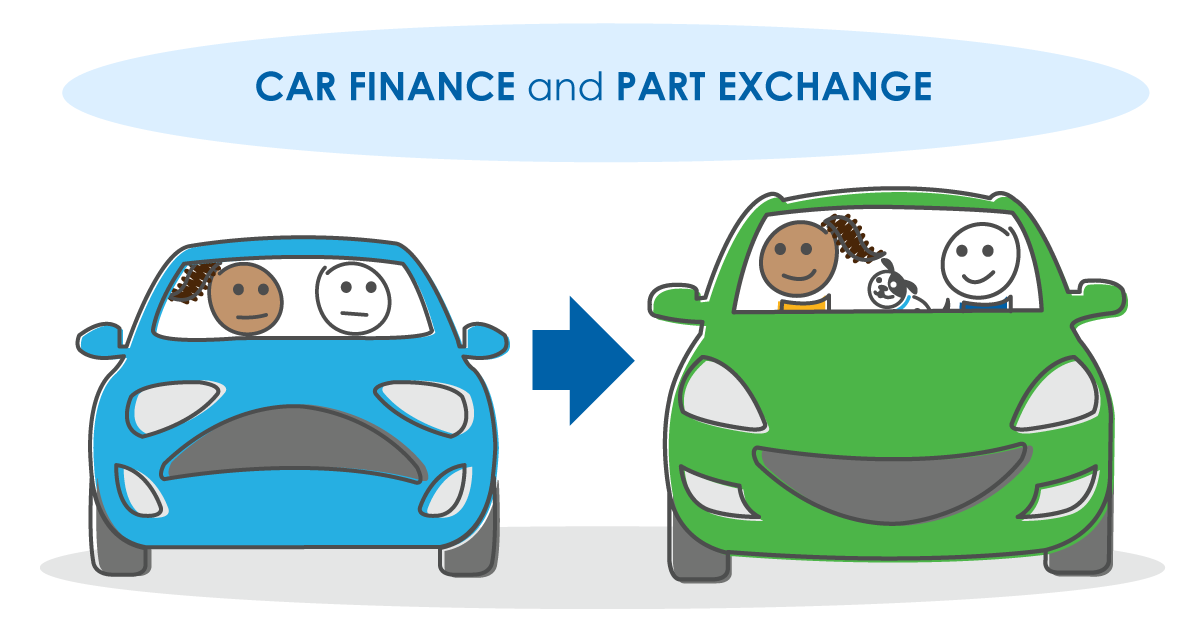
We understand that there can be many confusing elements to the car finance process. This blog post focuses on understanding what you need to know if you are looking to take out a new finance agreement and want to part exchange your current vehicle.
What does part exchange mean?
A part exchange is when you trade in your current car and put the proceeds towards the purchase of your new vehicle.
It provides a fast and suitable option for a private sale, and by selling your old car quickly, you could be driving your new car away sooner.
There are various tools on the web that you can use to get a rough estimate of your car’s value. Once you are ready to find that new car, the dealership will inspect your car to see what condition it is in and give you an accurate valuation.
How does part exchange work on a finance car?
Before you think about part exchange, you need to know your car’s value and anything you still owe on your finance agreement. The value of your car will be affected by its condition as well as the car’s mileage, service history, and specification.
You will need to get a settlement figure from your current finance provider. If your current finance agreement is with us, then you can obtain a settlement figure by logging into your My Go Car account.
Make sure you have the vehicle’s documents to hand such as the car’s logbook – known as its V5C – as well as any relevant paperwork, the vehicle manual, MOT, and service documents.
Take all of the above to the dealership where you have found your new vehicle and let them review the car to give you a part exchange price.
If the amount remaining on your finance is more than the car’s value, then you’re in negative equity. You may still be able to part exchange the car. You would need to pay the difference off yourself, as we are unable to add any existing finance onto a new agreement.
Selling a car with outstanding finance
You can sell your car with finance outstanding, but there are two things you should do to ensure you will be able to do so.
- 1) Inform your finance company and ask them for the settlement figure so that you can pay off your loan in full. You can then provide this settlement figure to the dealership you are looking to get your new car from.
- 2) Pay off any negative equity. As part of your part-exchange, the dealership will provide you with a value for your current car. If the amount you owe is larger than the car’s value, this is known as negativity equity. You will be required to cover the negative equity before you can get a new car.
What is negative equity?
Negative equity is when the car is worth less than the outstanding amount owed – also known as an “upside down” loan. For instance, if your car is worth £6,000, but your settlement figure is £8,000, you have £2,000 negative equity.
Can you part exchange with negative equity?
As a responsible lender, we will not add any negative equity into a new agreement.
One way of getting out of negative equity is to pay off your loan outright. Negative equity only exists when you still have a balance to pay on the finance. As soon as you clear the balance, you fully own the vehicle and there is no negative equity.
If you do not have the funds to clear the remainder of the loan, another way to get out of negative equity is to continue to make your payments on your finance agreement, as the more you pay off, the smaller the loan gets.
Advantages of part exchanging a car on finance
- Part-exchange is the easiest option as all you need to do is drop it off at the dealership, and then you drive your new car home the same day.
- If you choose to sell your car privately, you could end up waiting weeks or longer to find a buyer. Not to mention the time and effort wasted on viewings that lead nowhere, and also all the haggling people may want to do.
Disadvantages of part exchanging a car on finance
- You may not get the best price with part exchange. Usually, you can get a higher price when selling your car privately, so part exchange may mean you lose out financially.
- The dealer won’t be willing to go above the basic trade-in value, so may mean little room for negotiations.
What are the alternatives to part exchange?
One alternative to part exchanging your vehicle with the dealership is to sell your car privately. This means you would advertise the car on something like Auto Trader or Gumtree and you then wait for potential buyers to get in touch with you and select the best offer – which can either be the highest bid for the car or the most suitable circumstances e.g. they can pick the car up at a time that is suitable to you.
Another alternative is a company that promises to buy your car, regardless of its condition, such as We Buy Any Car. To do this, you enter your details and the condition of your car on their website. They will then give you an offer for your car. If you are happy with the price they are offering, you are directed to the nearest branch, where they will inspect the car and give you a final quote.
For more information and helpful advice on car finance and other related subjects visit our Guides.



